Unit 3 Period 4 Sea Exploration Using Language (1) 新人教版选择性必修四
文档属性
| 名称 | Unit 3 Period 4 Sea Exploration Using Language (1) 新人教版选择性必修四 |
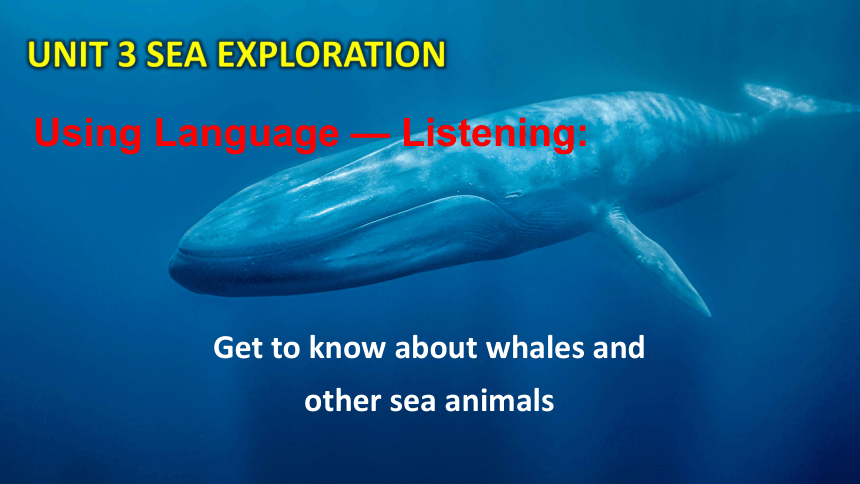
|
|
| 格式 | pptx | ||
| 文件大小 | 46.9MB | ||
| 资源类型 | 试卷 | ||
| 版本资源 | 人教版(2019) | ||
| 科目 | 英语 | ||
| 更新时间 | 2023-09-14 13:28:53 | ||
图片预览

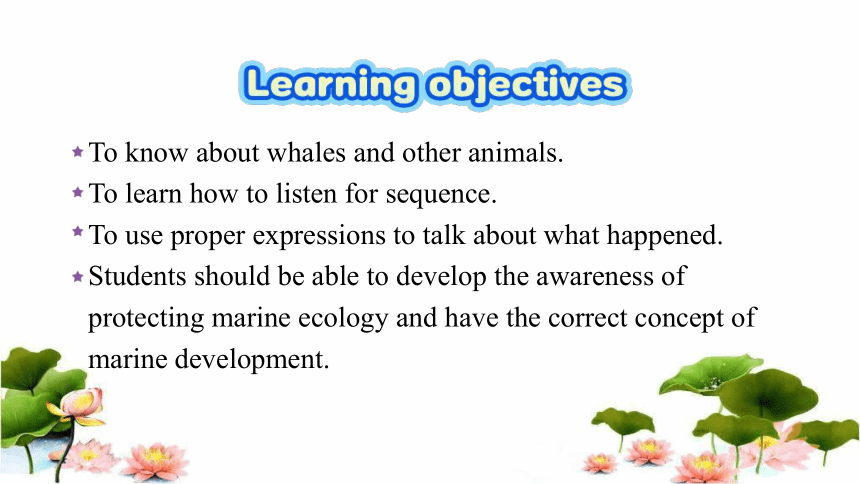
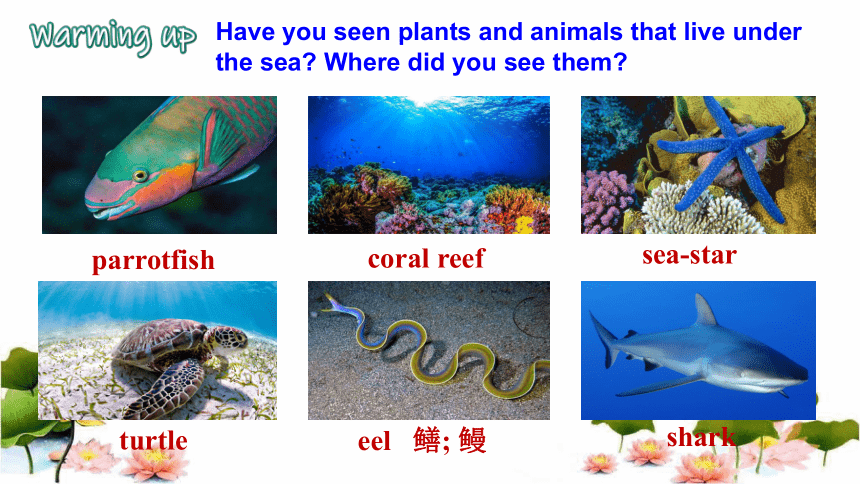
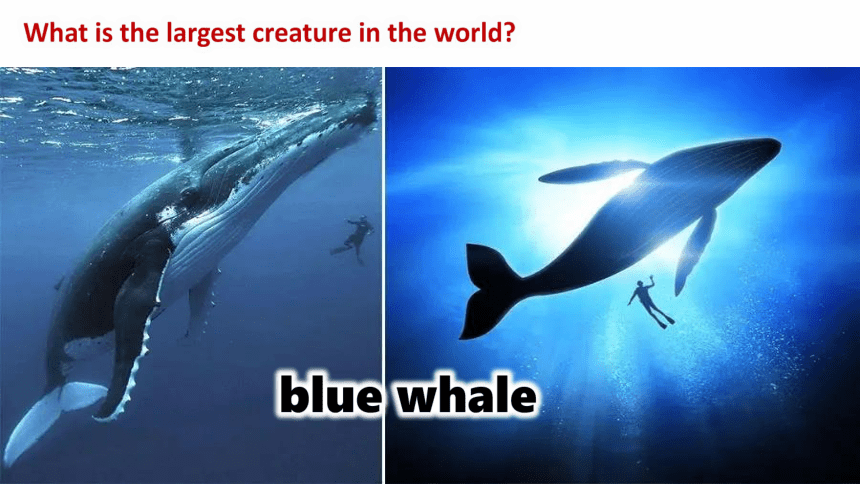
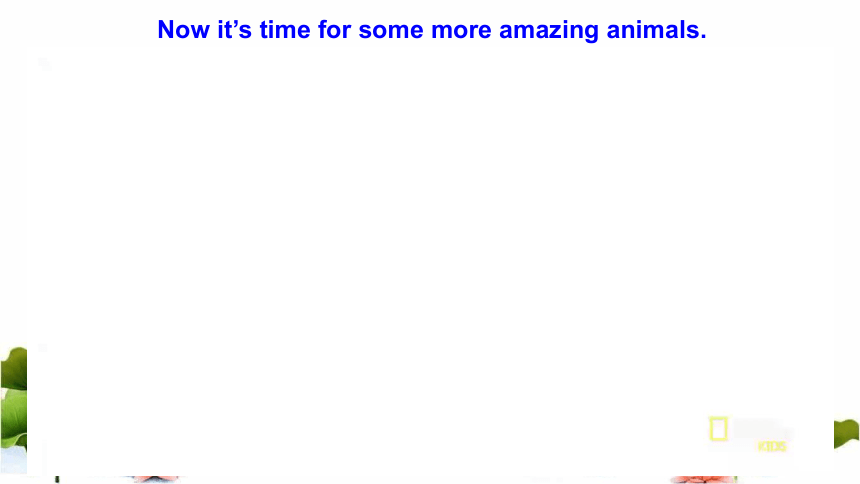
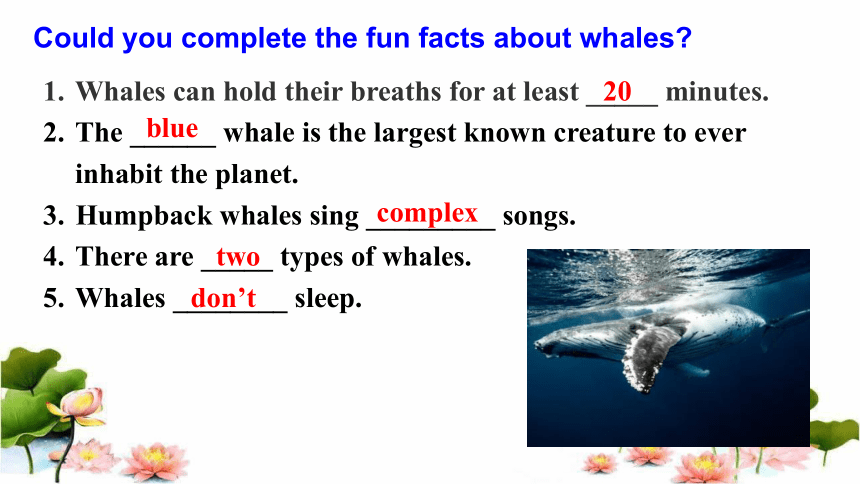
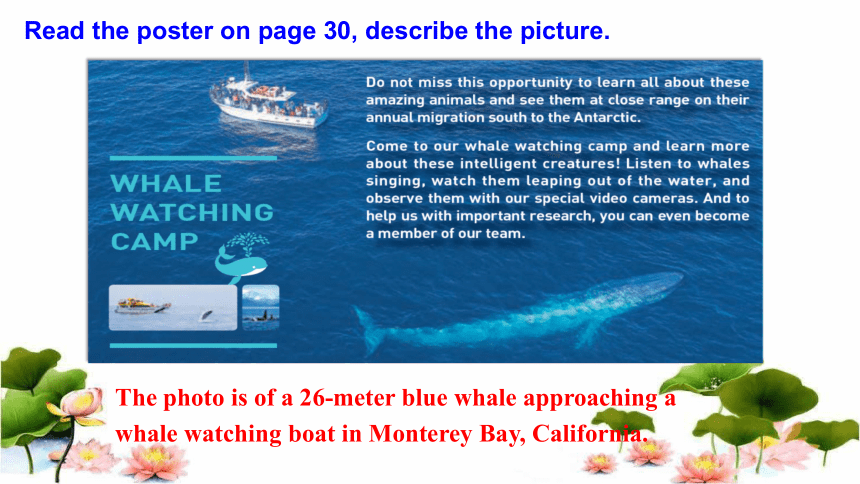

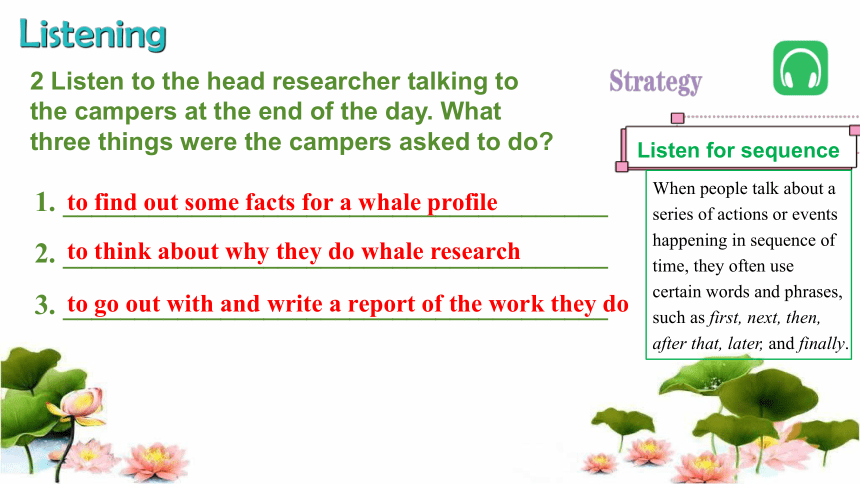
文档简介
(共25张PPT)
UNIT 3 SEA EXPLORATION
Using Language — Listening:
Get to know about whales and other sea animals
To know about whales and other animals.
To learn how to listen for sequence.
To use proper expressions to talk about what happened.
Students should be able to develop the awareness of protecting marine ecology and have the correct concept of marine development.
parrotfish
coral reef
sea-star
turtle
eel 鳝; 鳗
shark
Have you seen plants and animals that live under the sea Where did you see them
What is the largest creature in the world
blue whale
Now it’s time for some more amazing animals.
Could you complete the fun facts about whales
Whales can hold their breaths for at least _____ minutes.
The ______ whale is the largest known creature to ever inhabit the planet.
Humpback whales sing _________ songs.
There are _____ types of whales.
Whales ________ sleep.
20
blue
complex
two
don’t
Read the poster on page 30, describe the picture.
The photo is of a 26-meter blue whale approaching a whale watching boat in Monterey Bay, California.
1. What aspect of the camp would you like best
I would like the opportunity to see the whales close up best.
2. Do you think it is important to carry out research on whales and other sea creatures
This research helps us learn more about the wonderful world we live in, and it also helps us learn more about these amazing creatures so that we can better protect them.
Discuss the questions.
1. ______________________________________
2. ______________________________________
3. ______________________________________
to find out some facts for a whale profile
to think about why they do whale research
to go out with and write a report of the work they do
2 Listen to the head researcher talking to the campers at the end of the day. What three things were the campers asked to do
Listen for sequence
When people talk about a series of actions or events happening in sequence of time, they often use certain words and phrases, such as first, next, then, after that, later, and finally.
After that, we gave the group of whales a name, and each member a number.
They will be added to the directory so we can identify them in the future.
Most whales have slightly different fins and marks, which can help us to tell them apart.
Meanwhile, we also noted their location, so we can track their movements and plot their migration path.
Then we took pictures of their fins.
Finally, we contacted other whale research groups around the world to share the information with them.
First, we followed a group of whales with the boat.
Later, we created a database of their fins and locations.
2 Listen to the head researcher talking to the campers at the end of the day. What three things were the campers asked to do
1
8
2
3
4
5
6
7
1. How many species of whales are there
Over 80.
2. What is the criterion to divide the main types of whales
The criterion is whether they have teeth or not.
3. What do whales use sounds for
They use sounds to communicate and hunt.
4. Why do the campers take pictures of the whales' fins
This can help them to tell the whales apart.
5. Why do they contact other research groups
They want to share information with them.
Listen to the conversation again and answer the questions.
Pay attention to Sally’s part of the conversation and find out some facts for a whale profile.
Thinking map
Whales
(over 80 species)
Whales
with teeth
Whales
without teeth
food
species
food
typical
species
fish, sea animals
70
small organisms
200 tons
Length
100 feet
Weight
Blue whale
5 Some of the students could not make it to the camp. Imagine you were there. Tell your partner about what happened, using the expressions in the box below. Your partner can also ask questions to find out more about what happened.
A: Today we learnt about whales and whale research. First, we found some information and facts about whales. We used the library and the Internet.
B: What did you do after that
First(ly),… Second(ly), ... Third(ly), ...
First of all...
Then/After that/Afterwards/Next/Later on…
In the end/At last, ... At that time..
It began when... Meanwhile… Later…
Finally…
Expressing sequence
A: Today we learnt about whales and whale research. First, we found some information and facts about whales. We used the library and the Internet.
B: What did you do after that
A: Well, after that we thought about why we do whale research.
B: But why do we do whale research
A: There are lots of reasons. First of all, we need to know how many whales there are. Then, we need to know where they go. And finally, we need to understand more about them.
B: Then what did you do next
A: After that, we went out whale watching, following a group of whales in a boat.
B: That sounds great. Did you just watch them, or did you do anything else
A: We started by taking pictures of their fins, so we could tell them apart. At the same time, we noted their location, so we could track them.
B: What did you do afterwards
A: We created a database and gave each whale a name and number. Then finally, we shared our information with other whale research groups around the world.
B: It all sounds so wonderful! I wish I could have joined you.
A: I do, too.
6 Watch the video Protecting Biodiversity, and then discuss what other sea animals you would like to see. Talk with your partner and make a plan for a trip to see the animals. Your plan should include activities you would like to do.
Watch the video Protecting Biodiversity, and then discuss what other sea animals you would like to see. Talk with your partner and make a plan for a trip to see the animals. Your plan should include activities you would like to do.
What animals can you see in the video
shark
jellyfish
octopus
seal
crab
eel (鳗鱼)
What other sea animals do you know
clown fish
star fish
seahorse
dolphin
turtle
sea snail
For our trip, we would like to go to the Shanghai Ocean Aquarium, whose theme is “Spanning five continents by a connection of water”. We can first visit the special exhibition of saving sharks. Then we can go to see the seahorses whose number declined greatly for the past decade. However, most people do not know much about seahorses at all. I think we need to raise awareness about seahorses and marine conservation in China. The last spot will be The Chinese Pavilion, which displays the aquatic organisms and bio-system in the Yangtze River and some national endangered rare aquatic creatures, like Chinese alligator and Chinese Sturgeon.
In groups, make a list of plants and animals that live under the sea that you and your classmates have seen in any of the ways listed above. Share what you know about these plants and animals. Do you have any favorite sea plants or animals Tell your classmates what they are.
What do you know about the oceans
Survey
For the visitors
What is marine biodiversity exactly
What are the world’s rarest marine species
Why are so many species disappearing
How can you help promote marine biodiversity
For the staff in the museum
Does species diversity follow any patterns
How is marine biodiversity measured
What is being done to preserve marine biodiversity
What did you do to promote biodiversity while exploring or studying the oceans
The last whaling station in Australia closed in 1978. Whales are now an endangered species and in need of conservation. They are now protected by an international ban on whaling. However, some countries oppose the ban. In groups discuss the reasons for and against banning whaling.
Coral reefs are nicknamed the rainforests of the sea. However, environmental degradation is inflicting serious damage on them, threatening the diversity of ocean life. Experts are calling for joint efforts to protect them.
Coral reef ecosystems are known as underwater “tropical rainforests.” To restore the seabed ecology, conservation work has been carried out since 2004 on Fenjiezhou Island, including coral transplantation, bans on illegal fishing, and raising people’s awareness about the significance of coral reefs’ protection. Now coral covers 34 percent of the tourist area and 40-50 percent of the scuba diving area.
Thank you
UNIT 3 SEA EXPLORATION
Using Language — Listening:
Get to know about whales and other sea animals
To know about whales and other animals.
To learn how to listen for sequence.
To use proper expressions to talk about what happened.
Students should be able to develop the awareness of protecting marine ecology and have the correct concept of marine development.
parrotfish
coral reef
sea-star
turtle
eel 鳝; 鳗
shark
Have you seen plants and animals that live under the sea Where did you see them
What is the largest creature in the world
blue whale
Now it’s time for some more amazing animals.
Could you complete the fun facts about whales
Whales can hold their breaths for at least _____ minutes.
The ______ whale is the largest known creature to ever inhabit the planet.
Humpback whales sing _________ songs.
There are _____ types of whales.
Whales ________ sleep.
20
blue
complex
two
don’t
Read the poster on page 30, describe the picture.
The photo is of a 26-meter blue whale approaching a whale watching boat in Monterey Bay, California.
1. What aspect of the camp would you like best
I would like the opportunity to see the whales close up best.
2. Do you think it is important to carry out research on whales and other sea creatures
This research helps us learn more about the wonderful world we live in, and it also helps us learn more about these amazing creatures so that we can better protect them.
Discuss the questions.
1. ______________________________________
2. ______________________________________
3. ______________________________________
to find out some facts for a whale profile
to think about why they do whale research
to go out with and write a report of the work they do
2 Listen to the head researcher talking to the campers at the end of the day. What three things were the campers asked to do
Listen for sequence
When people talk about a series of actions or events happening in sequence of time, they often use certain words and phrases, such as first, next, then, after that, later, and finally.
After that, we gave the group of whales a name, and each member a number.
They will be added to the directory so we can identify them in the future.
Most whales have slightly different fins and marks, which can help us to tell them apart.
Meanwhile, we also noted their location, so we can track their movements and plot their migration path.
Then we took pictures of their fins.
Finally, we contacted other whale research groups around the world to share the information with them.
First, we followed a group of whales with the boat.
Later, we created a database of their fins and locations.
2 Listen to the head researcher talking to the campers at the end of the day. What three things were the campers asked to do
1
8
2
3
4
5
6
7
1. How many species of whales are there
Over 80.
2. What is the criterion to divide the main types of whales
The criterion is whether they have teeth or not.
3. What do whales use sounds for
They use sounds to communicate and hunt.
4. Why do the campers take pictures of the whales' fins
This can help them to tell the whales apart.
5. Why do they contact other research groups
They want to share information with them.
Listen to the conversation again and answer the questions.
Pay attention to Sally’s part of the conversation and find out some facts for a whale profile.
Thinking map
Whales
(over 80 species)
Whales
with teeth
Whales
without teeth
food
species
food
typical
species
fish, sea animals
70
small organisms
200 tons
Length
100 feet
Weight
Blue whale
5 Some of the students could not make it to the camp. Imagine you were there. Tell your partner about what happened, using the expressions in the box below. Your partner can also ask questions to find out more about what happened.
A: Today we learnt about whales and whale research. First, we found some information and facts about whales. We used the library and the Internet.
B: What did you do after that
First(ly),… Second(ly), ... Third(ly), ...
First of all...
Then/After that/Afterwards/Next/Later on…
In the end/At last, ... At that time..
It began when... Meanwhile… Later…
Finally…
Expressing sequence
A: Today we learnt about whales and whale research. First, we found some information and facts about whales. We used the library and the Internet.
B: What did you do after that
A: Well, after that we thought about why we do whale research.
B: But why do we do whale research
A: There are lots of reasons. First of all, we need to know how many whales there are. Then, we need to know where they go. And finally, we need to understand more about them.
B: Then what did you do next
A: After that, we went out whale watching, following a group of whales in a boat.
B: That sounds great. Did you just watch them, or did you do anything else
A: We started by taking pictures of their fins, so we could tell them apart. At the same time, we noted their location, so we could track them.
B: What did you do afterwards
A: We created a database and gave each whale a name and number. Then finally, we shared our information with other whale research groups around the world.
B: It all sounds so wonderful! I wish I could have joined you.
A: I do, too.
6 Watch the video Protecting Biodiversity, and then discuss what other sea animals you would like to see. Talk with your partner and make a plan for a trip to see the animals. Your plan should include activities you would like to do.
Watch the video Protecting Biodiversity, and then discuss what other sea animals you would like to see. Talk with your partner and make a plan for a trip to see the animals. Your plan should include activities you would like to do.
What animals can you see in the video
shark
jellyfish
octopus
seal
crab
eel (鳗鱼)
What other sea animals do you know
clown fish
star fish
seahorse
dolphin
turtle
sea snail
For our trip, we would like to go to the Shanghai Ocean Aquarium, whose theme is “Spanning five continents by a connection of water”. We can first visit the special exhibition of saving sharks. Then we can go to see the seahorses whose number declined greatly for the past decade. However, most people do not know much about seahorses at all. I think we need to raise awareness about seahorses and marine conservation in China. The last spot will be The Chinese Pavilion, which displays the aquatic organisms and bio-system in the Yangtze River and some national endangered rare aquatic creatures, like Chinese alligator and Chinese Sturgeon.
In groups, make a list of plants and animals that live under the sea that you and your classmates have seen in any of the ways listed above. Share what you know about these plants and animals. Do you have any favorite sea plants or animals Tell your classmates what they are.
What do you know about the oceans
Survey
For the visitors
What is marine biodiversity exactly
What are the world’s rarest marine species
Why are so many species disappearing
How can you help promote marine biodiversity
For the staff in the museum
Does species diversity follow any patterns
How is marine biodiversity measured
What is being done to preserve marine biodiversity
What did you do to promote biodiversity while exploring or studying the oceans
The last whaling station in Australia closed in 1978. Whales are now an endangered species and in need of conservation. They are now protected by an international ban on whaling. However, some countries oppose the ban. In groups discuss the reasons for and against banning whaling.
Coral reefs are nicknamed the rainforests of the sea. However, environmental degradation is inflicting serious damage on them, threatening the diversity of ocean life. Experts are calling for joint efforts to protect them.
Coral reef ecosystems are known as underwater “tropical rainforests.” To restore the seabed ecology, conservation work has been carried out since 2004 on Fenjiezhou Island, including coral transplantation, bans on illegal fishing, and raising people’s awareness about the significance of coral reefs’ protection. Now coral covers 34 percent of the tourist area and 40-50 percent of the scuba diving area.
Thank you
